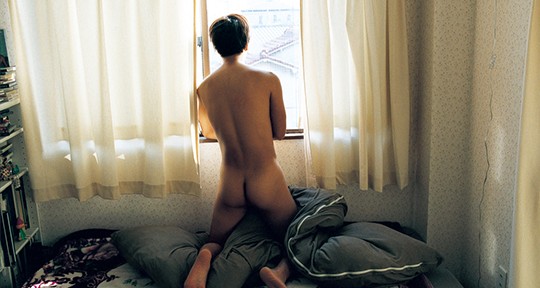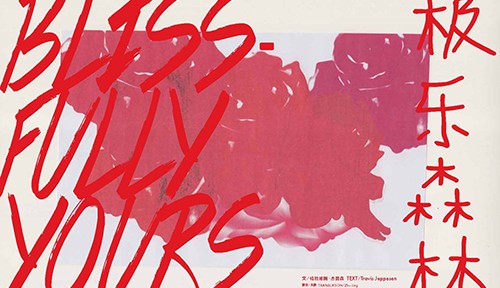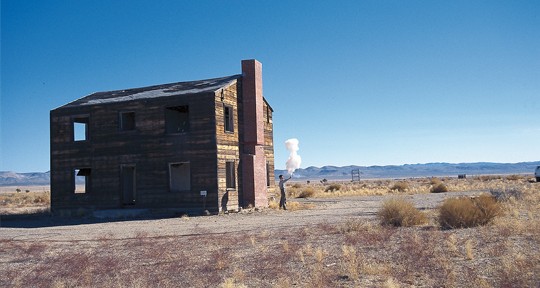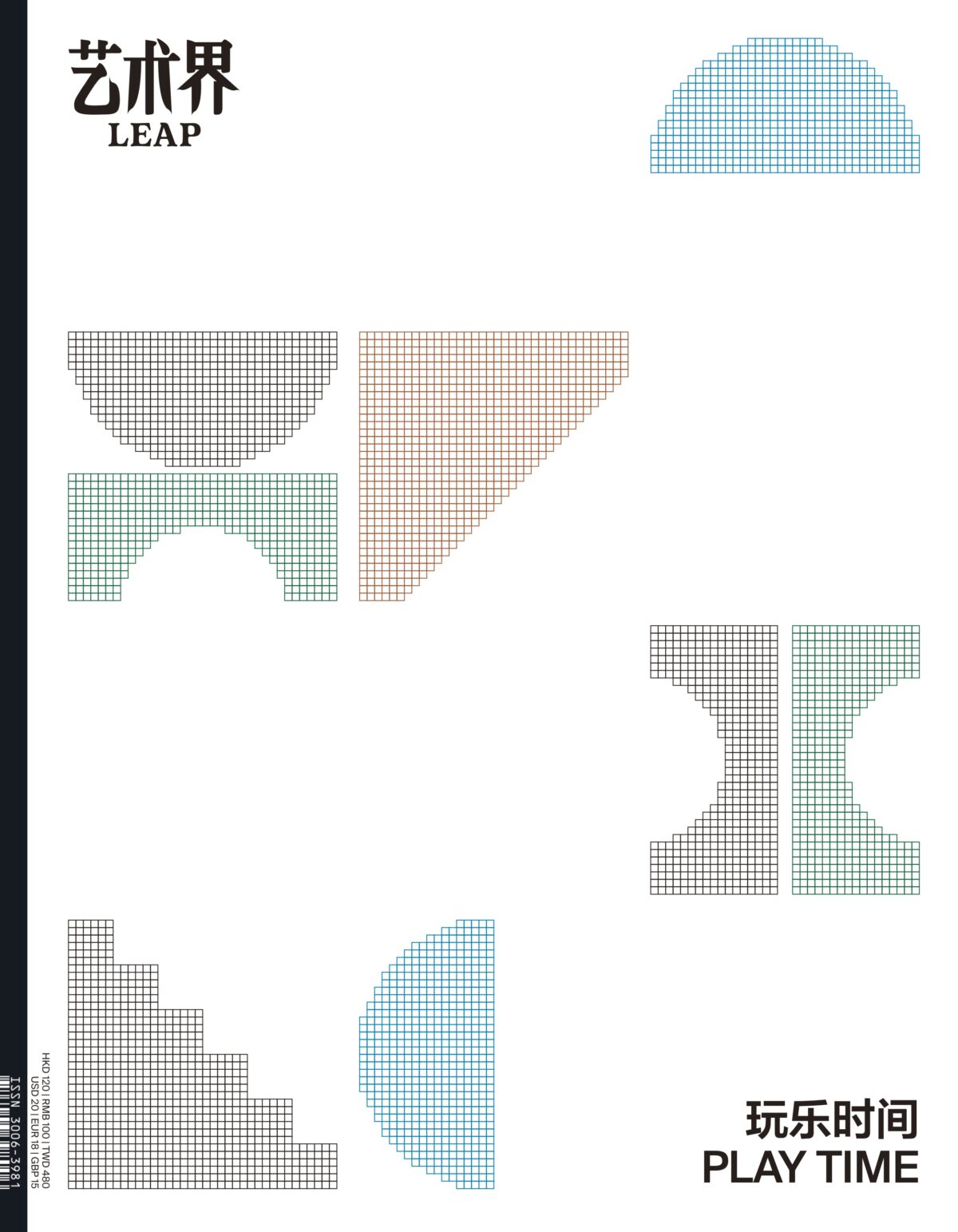It is perhaps more appropriate to discuss Hao Liang’s practice within the context of traditional Chinese painting than within ink discourse. Of course, the term “traditional Chinese painting” suggests a national identity that itself originates in cultural anxiety. This anxiety, in both the present globalized context and the history of China’s modernist path as a nation-state, in fact exists…
Read MoreWhen I first mentioned the idea of making a queer cover feature to friends and colleagues, their most common reaction was “you’re going to write about that beverage?” The beverage in question is Qoo, a Coca-Cola product aimed at kids and teenagers originally from Japan and introduced to the Chinese market in the early 2000s….
Read MoreI There are places we end up when we don’t really belong anywhere else. This sense of not-belonging, it is naturally felt by those existing on the fringes of society. There of course is no “outside” o…
Read MoreYang Fudong’s New Women premiered at a special exhibition during the 2013 Toronto International Film Festival. Shown in black and white on five screens arranged in a row on one gallery wall, New Women stood in contrast to its surroundings, an intense installation by Christopher Doyle called Away with Words. One of the most important…
Read MoreThe paintings of Zhang Hui offer neither fulfilling content nor aestheticism, and despite depicting concrete objects and scenes with clear brushstrokes, do not make reference to the real world in any clear way. Instead, his paintings move unhurriedly towards the image as the outcome of the duty stipulated by the act of painting, and stop…
Read MoreIn 1973, the artist Cheo Chai-Hiang set down his thoughts on art and its predicaments at some length. The text was written in Chinese and titled (in translation) “Written for the Occasion of 8th Moder…
Read MoreAt the opening of “Topophilia,” bottles of Taiwan Beer and cartons of Long Life cigarettes set on round tables at one end of the gallery gave viewers momentary pause. The scene, straight out of a home…
Read MoreBharti Kher’s first solo exhibition in China brings together her most representative works. The perplexing title of this exhibition is shared by an installation at the entrance, that of a hyena (more …
Read MoreHow do you pull off a solo exhibition with painting as its core in a 400-square-meter gallery with a ceiling that reaches 12 meters high at its peak? This space has previously hosted massive, visually aggressive, and spatially oppressive installations, such as Sun Yuan and Peng Yu’s contemporary spectacle Freedom, macro-narrative fabrications like Huang Yong…
Read MoreThe use of the term “digital art” in “The Wrong— New Digital Art Biennale” is intriguing. Evoking a medium specificity that recalls the often maligned, dated domain of new media art, but suggesting a …
Read MoreSince the 1990s, few events happening on the street or in public space in China have officially entered the public view. For the majority of people, the word “public space” seems to carry little meaning. The terms quanzi (circle) and jianghu (rivers and lakes), on the contrary, make a strong impression. Quanzi in Chinese society…
Read MoreFor one artist to decide to create work in tandem with another always carries with it the risk of hit or miss. The meeting of uniquely subjective minds can be as dissonant and detrimental as it can harmonious and supplemental. Ideally, of course, the latter is achieved—two heads are better than one. In the case…
Read MoreThe American poet Emily Elizabeth Dickinson once wrote: “To make a prairie, it takes a clover and one bee, / One clover, and a bee. / And revery.” For Spencer Finch, making a glacier takes a few candles to burn and then fade out (Shanghai Glacier). Finch regularly refers to the poems of Emily Dickinson,…
Read MoreFor his newest project, Hu Qingtai purchased and executed several plans for artworks. The result is an exhibition of eight works, each made according to the ideas of a different artist. The artists are Hu’s older brother Hu Qingyan, Li Gang, Li Liao, Jiang Bo, Yang Jian, Yang Xinguang, Zeng Hong, and Zhan Rui. By…
Read MoreFROM AT LEAST the time of Nixon’s visit in 1972, the United States has had a love-hate relationship with China. Opening relations with the People’s Republic did not stop Americans from calling it “Red China,” nor did it change their love for fortune cookies. This attitude—a combination of political paranoia, economic competitiveness and cultural nostalgia—spilled…
Read MoreWithin Chinese contemporary art discourse, there is often no distinction made between “female artist” and “feminist artist.” Thus, for Lin Tianmiao, escaping the mutual entanglement of these two concepts, both of which play a part in her practice, is simply impossible. The former generally places an essentialist emphasis on female identity, in her case focusing…
Read MoreThe Met, which has never before mounted a major exhibition of Chinese contemporary art, ambitiously frames this first attempt as an exploration of how contemporary works from a non-Western culture could be displayed in an encyclopedic art museum. Shown in the museum’s large galleries of Chinese art, “Ink Art” is the epitome of a missed…
Read MoreThe Shenzhen Ink Art Biennale may well have been the first biennial founded specifically to show a traditional art form. Thus, its influence has been limited to the fields of ink painting and traditio…
Read MoreThis year, red and black flags were raised outside the main site of the 4th Athens Biennale (AB4): the former Athens Stock Exchange building, which closed its doors in 2007. The colors invoked associa…
Read MoreDear Editor, Thank you very much for sending the interview with Zheng Shengtian for the studio’s reference—the article offers a conscientious review of the experiences of many Chinese artists in America over the past decades. It bears a lot for domestic art circles to contemplate, and will most likely exert a long-term influence. However, while…
Read More






